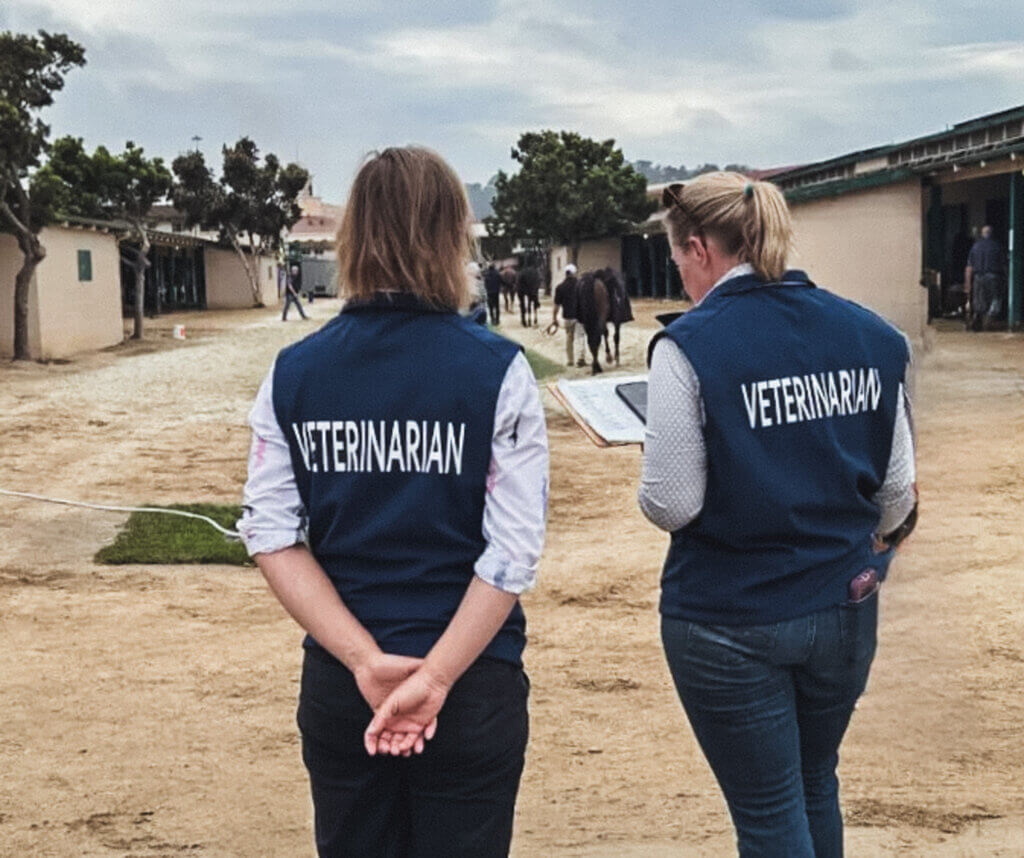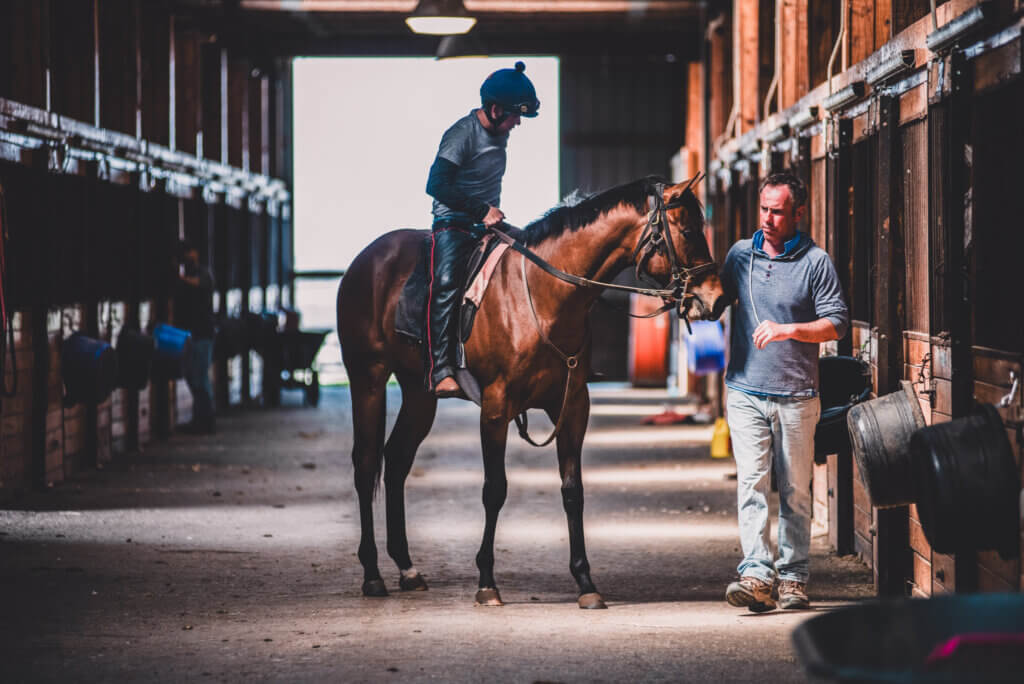Andrew Cohen
There will always be people who do not support the federal regulation of horse racing. There will always be people who think the way things have gone the past few decades in racing are the way things ought to go for the next few decades. There will always be people who are willing to risk the health and safety of horses for the pursuit of profit or to gain a competitive edge or simply because they don’t want to spend the time filling out paperwork. Those people will continue to complain about this or that but they will never be able to say that the Horseracing Integrity and Safety Act failed to immediately make Thoroughbred horse racing safer in the U.S.
The second year in the life of the federal racing law means there is now a previous year to compare to. And that’s what the feds have done. Last week, four days after a brilliant “Belmont at Saratoga” meet, HISA delivered news that ought to reassure even the harshest skeptics that there is good reason to be confident that federal racing policies are working. From HISA’s press release: The first quarter of 2024 “witnessed an approximate 38 percent decrease in racing-related fatalities year over year. Racetracks operating under HISA’s rules and running races in the first quarter reported 0.84 racing-related equine fatalities per 1,000 starts, compared to 1.35 racing-related equine fatalities per 1,000 starts in the first quarter of 2023.”
Facts still matter. Data don’t lie. It’s too bad the HISA folks can’t send these statistics over to the U.S. Supreme Court, which may decide as soon as this week whether to accept for review a HISA case, or to the Fifth U.S. Circuit Court of Appeals, which heard oral argument in a HISA case last fall but has yet to issue a ruling. “Sometimes government works,” wrote Sixth U.S. CIrcuit Judge Jeffrey Sutton, a Republican-nominee once on the short list for the U.S. Supreme Court, when he upheld HISA in March 2023. History has proven him right as rain: The federal government has made Thoroughbred racing measurably safer. That is no longer in question.
The feds tell me that they are trying to get horse fatality data from non-HISA tracks to compare to these statistics and it will be interesting to see how those figures shake out. (Hey, Louisiana, how about sharing your fatality figures before you try again to loosen medication rules?) It will also be interesting to check back one year from now to see if the marked improvement in horse safety from 2023 to 2024 continues from 2024 to 2025. Just because things have gotten safer this year doesn’t guarantee that they’ll be safer still next year – correlation is never necessarily causation – but in this case that’s surely what we should all hope for (and bet on).
Meanwhile, from Ben Mosier, executive director of the Horseracing Integrity & Welfare Unit, came another wave of statistics: “In the first 366 days of the ADMC Program,” Mosier wrote, “More than 76,000 horses were tested at 60+ racetracks and training centers in 20 states. Partner laboratories reported the presence of 40+ Prohibited Substances. 277 barn searches were conducted. 171 tips were received through the anonymous whistleblower platforms. Program laboratories reported 38 Atypical Findings; of the 37 cases that have been resolved thus far, three have been pursued as a potential violation. Cases were resolved in an average of 70.2 days from the date of sample collection/violation.”
The last sentence stands out to me. State racing commissions are notorious for delaying the resolution of cases. Almost every week, for example, the United States Trotting Association lists fines and suspensions and other disciplinary actions from races that took place in 2021 or 2022. The quick resolution of cases is one of the most important improvements HISA and HIWU have brought to the regulation of horse racing. What else stands out? Less than one-tenth of the “atypical findings” were pursued as potential violations. Remember that ratio the next time someone tries to argue that the feds are overregulating, or over-punishing, trainers.
The feds are smart not to gloat over these initial figures. But they would be wise to make sure that every member of Congress, and every state legislator where there is racing, knows that the first blush of data is terribly encouraging. Surely, HISA executives know that there is still an awful lot of regulatory work to do to save more racehorses and to put more cheating owners and trainers on their heels. And surely they know that there are still pockets of political opposition to HISA that need to be whittled down, fact by fact, voice by voice, until they dissolve away. No matter your perspective on HISA, these fatality statistics are undeniably encouraging news.
A view from HISA’s horseman’s advisory group
The Thoroughbred Daily News’s Sue Finley had an excellent interview last week with bloodstock agent David Ingordo as he leaves the HISA’s Horsemen’s Advisory Group. He said many things that merit amplification. “I’ve dealt directly with the attorneys for HISA and HIWU over medication violations for friends and clients. I can tell you they’re not out to get you. It’s just not that way,” he told Finley. “I’m not a lawyer, but I have learned through experience that attorneys should take another look at the theatrics that might have worked in the past and realize there is a lot more understanding there if you sit down and talk to HISA and HIWU.”
Ingordo explained the role of the advisory group. “A lot of us on this advisory committee have become de facto ombudsman to trainers and owners when they encounter a problem,” he told Finley, “We all signed an NDA. So if someone calls me for help or advice, I can speak to them pretty frankly and clearly, and I have my conversation with that person on a confidential level. The job is to help people and solve problems. I think that’s important to really focus on. Anybody in the industry who has questions, problems or concerns, call someone you feel comfortable talking to in this group.” Nothing remotely like that exists within state regulatory regimes.
Ingordo’s final words are a fitting coda to the effort by regulators to reach out to industry stakeholders for help and guidance. “My informed opinion is that HISA is here to stay and it is one of the most important organizations in racing today,” Ingordo told Finley. “We need to make HISA work and serving on this committee gives those of us who love the sport a chance to help HISA be the best overseer it can be. You’re going to get out of it what you put into it and what you put into it can help shape our sport for the future. For me, I treated this like this is my civic duty to the industry.” Next up, Todd Pletcher and three others will join the advisory group.
It’s no secret why Louisiana racing has lost its way
It appears the feds have their shit together, at least so far, but Paulick Report editor-in-chief Natalie Voss posted a really smart piece last week that helps explain why Louisiana racing has gone off the rails. Stephen Landry, who apparently took over as executive director of the state’s racing commission sometime this spring, has an evident (many would say obvious) conflict of interest: He has ownership interests in Thoroughbred horses that are racing or being bred in the state, Voss reports. Many states have rules in place to preclude such conflicts. It’s unclear whether state lawyers in Louisiana have checked the rules as they might apply to Landry.
Voss raises a series of questions about the ethics of Landry’s position that Louisiana should have answered by now as it emerges from its disastrous effort to unilaterally loosen medication rules. Voss writes: “How’s he supposed to investigate and recommend to his commissioners potential changes to the state’s breeders’ incentive program objectively? What’s he going to do if he’s alerted [trainer Art Stall, Jr.] has a possible rule violation being investigated by the staff? How would he deal with an appeal of a disqualification coming from one of his active (or recent) ownership partners?”
The “appearance of impropriety” is great, you could say. “The Association of Racing Commissioners International’s model rules expressly prohibit this, both for employees of a commission (like the executive director) or for employees under the executive director,” Voss tells us. “Whether it’s an actual ethics code violation or an optics issue,” she writes, “they’d be well-served to address it before it becomes one more thing that blows up in their faces. For that matter, so would Landry.” I would think every honest horse person in Louisiana would want and expect answers from Landry and other commission members.
NOTES
Iowa horsemen are paying lawyers for a lost cause. The Iowa Horsemen’s Benevolent and Protective Association tried last year to block HISA from being enforced. They filed their lawsuit in Arkansas, perhaps hoping they would get a radical federal judge to strike down the federal racing law. That didn’t happen. A trial judge rejected the Iowa HBPA’s request for an injunction. Last week, lawyers for the union argued their case before the Eighth U.S. Circuit Court in St. Louis. It didn’t seem to go well but one appellate judge asked an important question that generated an important response from the lawyer representing the Federal Trade Commission, which oversees HISA. Here’s how Rox Laird, of Courthouse News, wrote it up:
“U.S. Circuit Judge Raymond Gruender, a George W. Bush appointee, wondered how conflicts between the authority and the FTC would be resolved. ‘What I’m curious about is, let’s say the authority,’ nearly half of which represents the racing industry, ‘is determined that they don’t want to have any regulation related to drugs in the horses. And the FTC on the other hand thinks there should be,’ the judge said. ‘What allows the FTC, if anything, to initiate a rule in that regard?’ [Courtney Dixon, the federal lawyer] said the FTC’s authority there would be its general rulemaking power, under the amended statute, to abrogate, add to or modify authority rules.”
This is critical to understanding one of the most significant arguments against HISA – that Congress has unconstitutionally delegated its power to a private entity, the HISA Authority, without adequate federal regulatory oversight. Such oversight exists from the FTC but HISA officials should come up with their own (and more thorough) answer to Judge Gruender’s question about proactive FTC action and make sure that every other judge now considering the future of HISA sees it. There is strong evidence that FTC oversight of the HISA Authority is meaningful and no judge ruling on HISA should be without that evidence during this crucial time.
A call to action.
Do yourself a favor and read Erin O’Keefe’s commentary on rescuing vulnerable racehorses. “Currently, the Thoroughbred industry lacks sufficient systems to ensure safety nets for all horses, leading to some that ‘fall through the cracks,’ a fact most are aware of and many are working towards solutions,” O’Keefe writes. “But what about horses that are shoved through those cracks? The horses that can clearly be identified as high risk, due to age, reproductive status/history, general performance, or injury? Our duty to those horses is to take greater care in transitioning them to a suitable next phase of life or maintaining ownership.”
One final note on the new HISA figures.
There was another interesting tidbit about riding crop violations from the new HISA safety figures. The feds tell us: “During the first quarter of 2024, HISA reported 4.74 crop rule violations per 1,000 starts, compared to 4.46 crop rule violations per 1,000 starts in the first quarter” of 2023. I wonder why crop rule violations didn’t decrease this year. Are regulators looking more closely at the work jockeys are doing in races? Is the increase just a statistical variance? Is there a measure of subjective analysis of these crop rule cases that regulators need to tweak? I’d love to hear from a jockey or two.



